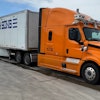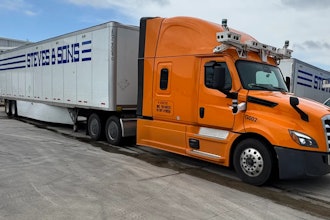
One thousand Gulf-War-era helicopters. Sixty-four million cars and trucks. Forty-one thousand counterfeit consumer electronics. What would you say these totals have in common?
If you’re thinking, “Each is a mountain of expensive hardware,” you’d be right. But, beyond that, those quantities represent billions of dollars in risk, expenses and lost opportunities that the technologies of intelligent, connected track-and-trace systems could have forestalled. And they’re just three examples of the innumerable cases of loss and waste that afflict American industry and American taxpayers every year.
Let me explain.
In 2014, U.S. carmakers had to recall about 64 million vehicles. Suddenly, and mostly manually, manufacturers had to trace defective parts from OEM to production line to vehicle to dealer to owner.
By mid-2014, the recall had reportedly cost one major automotive manufacturer alone about $2.4 billion. Automated, connected inventory management could have cut that loss substantially. Not only would recall and remediation have been streamlined, but integrated track-and trace-systems could have headed off certain quality issues before they arose in the first place.
What about the helicopters? When Operation Desert Storm wrapped up in 1991, the Pentagon wasn’t quite sure what had become of hundreds of them, along with other war materials worth about $2 billion. Automated inventory management, as we know it today, could have cut that loss dramatically.
Finally, consumer electronics: You might remember last year’s raid on a Chinese factory that was churning out tens of thousands of fake devices, some of which were finding their way to the United States.
One of the ways that this could have been avoided was the use of serialized barcodes with customer specific data that could determine the authenticity of the devices.
My point is that the stakes for manufacturers and their customers — and society overall — have never been higher. We’re all vulnerable to fallout from:
- Manufacturing process errors
- Production inefficiencies
- Incomplete manufacturing data
- Shipments of defective materials to customers
- Late deliveries
- Lack of inventory control
- Product recalls
- Counterfeiting
And dozens of other issues.
Fortunately, two complementary innovations are empowering manufacturers to strike back: automated serialization and traceability, and The Connected Enterprise.
By integrating serialization and traceability systems with central enterprise networks, manufacturers are minimizing risk while scoring substantial gains in effectiveness and productivity. To appreciate the power of The Connected Enterprise and its place in the Internet of Things, take a look at the layout that persists in many conventional operations.
Traditional enterprises wall-off the corporate network from the industrial side. Back-office computers talk to dedicated servers, but factory-floor access is limited. A separate PC/Ethernet ecosystem controls motors, drives, actuators and other equipment.
Marking devices, for example, can’t easily share the identity and genealogy of the parts the production line feeds them.The Connected Enterprise, however, diffuses information seamlessly across a central network, incidentally unlocking the full potential of serialization and traceability systems.
Recently, Rockwell Automation and MECCO, a Rockwell Automation Encompass™ program partner, teamed up to introduce discrete tracking software with EtherMark®, a technology that simplifies marking-equipment integration. EtherMark removes fragile shop-floor PCs and reduces conventional custom programming and integration work from a typical 30 to 80 hours to as little as eight minutes.
Now components can be located in real time, anywhere in the manufacturing process. Their service lives can be recorded, from cradle to grave, and their unique identification numbers (UIDs) can be permanently associated with sub-assemblies and finished products.
With UIDs archived in a secure database, The Connected Enterprise gains defect containment and error-proofing capacity, along with quality improvement, parts authenticity assurance, supply-chain management effectiveness, better inventory control, increased productivity, and shorter time to market.
For all of us in the manufacturing sector, the Internet of Things has already dawned. Avoidance of risk, loss and waste is a tempting prospect, but a small detail in the unfolding global revolution. Only companies that face the future head-on will be positioned for full competitive advantage.
Those of us who embrace fundamental shifts such as the integration of automated serialization and traceability with The Connected Enterprise — and the countless other innovations that will transform our particular niches — will define the coming decades as an exciting and rewarding stretch of history.
This blog was originally posted by Dave Sweet, President, MECCO at Rockwell's blog site. It can be viewed in its entirety by clicking here.























